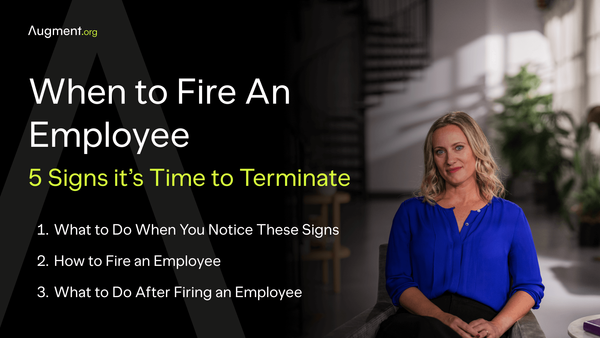Retaining Talent: 7 Tips to Attract and Keep Top Talent
Retaining top talent is essential for maintaining high employee retention rates and building a productive workforce. In an era of tight hiring markets, effective retention strategies are key to reducing employee turnover and securing the long-term success of any organization.

What is Employee Retention?
Employee retention refers to an organization's ability to keep its talented employees from leaving. It's more than just reducing employee turnover; it's about creating an environment where top talent wants to stay and contribute to the company's success. High employee retention rates are indicative of a positive work environment and effective talent management strategies.
In simple terms, when a company excels in retaining talent, it means they're not only good at hiring the right people but also skilled in maintaining a workplace culture that supports and engages these employees. Retention goes hand-in-hand with how a company nurtures its workforce, recognizing their efforts, and providing them with opportunities to grow both professionally and personally.
Why Does Employee Retention Matter?
Employee retention is pivotal for businesses aiming to thrive in competitive markets. When talented employees remain with a company, it leads to a more stable and experienced workforce. This stability is essential because frequent employee turnover can disrupt the productivity and harmony of a team.
Retaining talent is not just about keeping headcount stable; it's about preserving the invaluable skills and knowledge that experienced employees bring to the organization. These individuals often hold key insights into the company's operations and customer relationships, which are crucial for maintaining quality and efficiency.
A high retention rate reflects positively on a company's workplace culture and management practices. It signals to potential new hires and stakeholders that the organization values its employees and invests in their growth and satisfaction. This reputation for valuing employees can become a key differentiator in attracting top talent and establishing the company as a desirable place to work.
Benefits of Retaining Talent
Retaining top talent offers a multitude of benefits for organizations, impacting everything from productivity to company culture. Here are some key advantages:
- Enhanced Productivity: Employees who have been with a company for an extended period understand its systems and processes well. This familiarity allows them to work efficiently and effectively, directly boosting productivity.
- Stability and Continuity: Long-term employees provide a sense of stability, which is vital for maintaining consistent quality and service. They also play a crucial role in preserving the organization's institutional knowledge.
- Reduced Recruitment Costs: High employee turnover can be costly. By retaining talent, companies save significantly on the costs associated with recruiting, hiring, and training new employees.
- Improved Employee Engagement: When employees feel valued and see opportunities for growth, they are more engaged. Engaged employees tend to be more committed and contribute positively to the company's goals and culture.
- Better Team Dynamics: Teams with long-standing members tend to have stronger dynamics and better collaboration, as they understand each other's strengths and working styles.
- Attracting New Talent: Companies known for high retention rates and a positive work environment are more attractive to potential hires. This reputation can give an organization a competitive edge in the job market.
- Alignment with Business Goals: Experienced employees are often more aligned with the company's vision and goals. Their deep understanding of the business can drive strategic decisions and innovations.
How to Retain Talent
Retaining top talent is crucial for any organization aiming for long-term success. Here are effective strategies to help retain your best employees:
Offer Competitive Compensation and Benefits
One of the most effective retention strategies is to ensure that your compensation and benefits are competitive within your industry. Talented employees often have multiple job options, and compensation is a key factor in their decision-making process. But it's not just about the money. Comprehensive benefits, including health care, retirement plans, and other perks, play a significant role in retaining top talent.
- Understand Industry Standards: Regularly research and compare your compensation packages with those of similar organizations in your industry. This helps in staying competitive and appealing to highly talented people.
- More Than Just Salary: Remember, retaining talent involves more than just a good salary. Health benefits, retirement plans, and flexible work hours are crucial in making your employees feel valued. These benefits show that the company cares about their overall well-being and future.
- Personalize Benefits: Tailoring benefits to suit the needs of your diverse workforce can make a big difference. For instance, younger employees might value career development opportunities, while those with families might appreciate better healthcare plans.
- Regular Reviews and Adjustments: The job market and industry standards are always changing. Conduct regular reviews of your compensation and benefits and adjust them as necessary to ensure they remain attractive and relevant.
Foster a Positive Work Environment
Creating and maintaining a positive work environment is a key factor in retaining talent and ensuring employee satisfaction. A workplace that supports and values its employees leads to higher engagement, productivity, and loyalty. Here's how to foster such an environment:
- Promote Work-Life Balance: Encourage practices that allow employees to balance their work and personal life. This could include flexible work hours, the option to work remotely, or providing adequate time off. A healthy work-life balance helps prevent burnout and keeps employees motivated.
- Build a Culture of Respect and Inclusion: Cultivate a workplace culture where every employee feels valued and included. This means not only having diversity and inclusion policies but actively practicing them. Regular training and open discussions on these topics can help.
- Provide Opportunities for Team Building: Strong team relationships contribute to a positive work environment. Organize team-building activities, both formal and informal, to help team members bond and understand each other better.
- Open Channels for Feedback: Create a culture where feedback is encouraged and valued. This includes both giving and receiving constructive feedback. Employees should feel comfortable sharing their ideas and concerns without fear of retribution.
- Recognize and Celebrate Successes: Regularly acknowledge and celebrate the achievements of your employees. Recognition can be as simple as a shout-out in a meeting or as formal as an award ceremony. This recognition shows employees that their hard work is noticed and appreciated.
- Lead by Example: The attitude and behavior of leaders and managers set the tone for the rest of the organization. Leaders should exemplify the values of the company and treat all employees with respect and fairness.
Provide Opportunities for Growth and Development
Investing in employee growth and development is a cornerstone of effective talent retention. When employees see a clear path for career advancement within a company, they are more likely to remain engaged and committed. Here's how organizations can provide these opportunities:
- Develop Clear Career Paths: Establish well-defined career paths within the organization. This clarity helps employees understand the potential for advancement and what steps they need to take to progress in their careers.
- Offer Training and Development Programs: Provide regular training and professional development opportunities. These could range from in-house workshops to sponsoring external courses or conferences. Continuous learning not only benefits the employees but also brings new skills and ideas into the organization.
- Mentorship and Coaching: Implement mentorship programs where experienced employees guide and support newer or less experienced staff. This not only aids in skill development but also fosters a culture of learning and collaboration.
- Encourage Cross-Departmental Learning: Allow employees to take on projects or roles in different departments temporarily. This exposure can provide a broader understanding of the company and develop versatile skill sets.
- Regular Performance Reviews and Feedback: Conduct regular performance reviews to assess progress and provide constructive feedback. These reviews should be a two-way conversation, where employees can express their career aspirations and receive guidance on how to achieve them.
- Personalized Development Plans: Recognize that each employee has unique skills and career goals. Tailoring development plans to individual needs shows that the company values and invests in their personal and professional growth.
Recognize and Reward Achievements
Acknowledging and rewarding the hard work and achievements of employees is a key aspect of retaining talent. Regular recognition not only boosts morale but also reinforces the behaviors and efforts that contribute to the success of the organization. Here are ways to effectively recognize and reward your employees:
- Implement a Formal Recognition Program: Establish a program that regularly acknowledges employee achievements. This could be monthly or quarterly awards for outstanding performance, innovation, or teamwork. Recognition coming from leaders and peers can have a significant positive impact.
- Offer Meaningful Rewards: Rewards should be something that employees value. This could be monetary bonuses, extra time off, or even opportunities for professional development. The key is to align rewards with what motivates your employees.
- Public Acknowledgments: Celebrate achievements in a public setting, like company meetings or through internal newsletters. Public recognition not only makes the employee feel valued but also sets a positive example for the rest of the team.
- Personalized Thank-Yous: Sometimes, a simple and sincere thank you can make a big difference. Personalized messages acknowledging specific contributions can make employees feel appreciated and seen.
- Encourage Peer-to-Peer Recognition: Create a culture where employees are encouraged to recognize each other's contributions. This can build a sense of community and support within the team.
- Track and Celebrate Career Milestones: Acknowledge significant career milestones such as work anniversaries or promotions. Celebrating these moments can reinforce the employee's sense of belonging and achievement within the company.
Encourage Open and Honest Communication
Open and honest communication within a company is vital for retaining talent and ensuring a positive workplace. It allows employees to feel heard and valued, and it provides employers with essential insights into the workforce's needs and concerns. Here are effective ways to encourage this communication:
- Establish Regular Feedback Channels: Set up regular channels for employees to share their feedback and opinions. This can be through surveys, suggestion boxes, or regular one-on-one meetings with managers. The key is to make these channels easily accessible and genuinely considered.
- Hold Regular Meetings: Conduct regular team meetings or town halls where employees can discuss their ideas, concerns, and feedback openly. These meetings should be structured to encourage participation from all levels of the organization.
- Promote a Culture of Transparency: Encourage leaders and managers to communicate openly about company goals, challenges, and changes. Transparency from the top sets a precedent for open communication throughout the organization.
- Act on Feedback: Simply collecting feedback is not enough. Act on the feedback received, and let employees know that their input has led to changes or improvements. This action demonstrates that their opinions are valued and can lead to tangible outcomes.
- Encourage Peer Communication: Foster an environment where employees feel comfortable communicating with each other. This can be through collaborative projects, team-building activities, or social events.
- Train Managers in Effective Communication: Equip your managers with the skills to communicate effectively and handle feedback constructively. Good communication from managers can greatly enhance team dynamics and employee satisfaction.
Implement Effective Leadership
Effective leadership plays a crucial role in retaining talent within an organization. Leaders who are transparent, communicative, and supportive create a positive work environment that encourages employees to stay and grow. Here's how effective leadership can boost retention:
- Practice Transparency: Leaders should be open about the company's goals, challenges, and changes. Transparency helps build trust and ensures that employees feel included and informed about where the company is headed.
- Open Lines of Communication: Good leaders maintain open lines of communication with their teams. This means being approachable and responsive to employee needs and concerns. Regular check-ins and an open-door policy can foster a sense of accessibility.
- Provide Support and Guidance: Effective leaders support their employees' career paths and professional development. They provide guidance, mentorship, and resources necessary for their team's success and advancement within the company.
- Encourage and Model Teamwork: Leaders should encourage collaboration and teamwork. By modeling this behavior, they set a standard for the entire team, promoting a culture of mutual support and respect.
- Acknowledge and Address Employee Concerns: Responsive leaders pay attention to their employees' feedback and concerns, addressing them promptly. This responsiveness shows employees that their opinions matter and are valued.
- Lead by Example: Great leaders lead by example, embodying the company's values and setting a high standard for integrity, work ethic, and respect for others.
- Empower Employees: Empowering employees to take on new challenges and make decisions can enhance their sense of ownership and satisfaction with their job.
Conduct Exit Interviews
Exit interviews are a valuable tool in understanding why employees choose to leave an organization. They provide insights that can be crucial for improving retention strategies. Conducting these interviews effectively can help organizations address underlying issues and reduce future turnover rates. Here's how to make the most of exit interviews:
- Create a Structured Interview Process: Develop a standardized set of questions that aim to uncover the reasons behind an employee's decision to leave. This approach ensures consistency and helps in gathering comparable data across different interviews.
- Ensure a Comfortable and Open Environment: Conduct the interview in a manner that encourages honesty and openness. Assure the departing employee that their feedback will be used constructively and will remain confidential.
- Focus on the Employee’s Experience: Ask about their experience with the company, including aspects like management, work environment, job satisfaction, and what prompted their decision to leave.
- Seek Constructive Feedback: Encourage constructive criticism about what could have been done better or differently. This information is invaluable for making positive changes in the organization.
- Analyze Trends: Regularly review the data collected from exit interviews to identify patterns or common issues. This analysis can offer quantitative data to inform future retention strategies.
Act on the Feedback: Use the insights gained from exit interviews to make necessary changes. Whether it's improving management practices, work conditions, or career development opportunities, acting on this feedback shows a commitment to continuous improvement.



